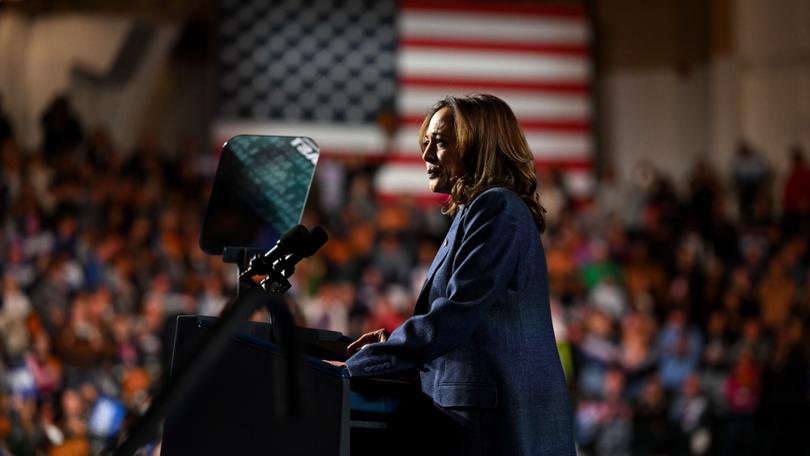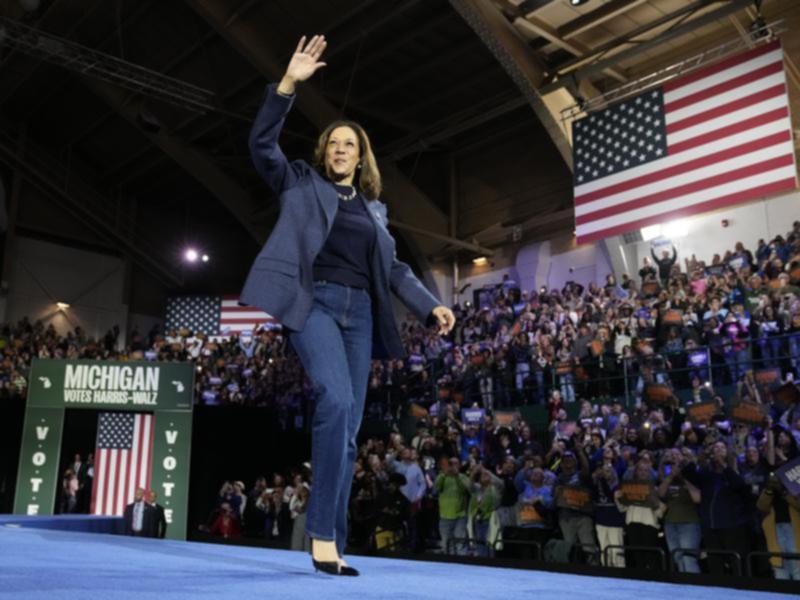THE WASHINGTON POST: Is Kamala Harris winning crucial late deciders?

Democrats got their best polling news in weeks on Saturday when renowned pollster J. Ann Selzer showed Vice President Kamala Harris somehow surging to a three-point lead in Iowa.
That’s in a state Donald Trump carried by eight points in 2020. (For more on what to make of that, see here.)
Sign up to The Nightly's newsletters.
Get the first look at the digital newspaper, curated daily stories and breaking headlines delivered to your inbox.
By continuing you agree to our Terms and Privacy Policy.But perhaps their second-best polling nugget landed the following day when the final New York Times-Siena College swing-state polls showed late-deciding voters breaking for Harris.
Among those who said they had decided in “the last few days,” Harris led by 16 points, 58 per cent to 42 per cent.
Needless to say, this would be great for Harris. There have been few persuadable voters in a race that has polled so tight for so long; if the remaining ones are breaking for Harris by double digits, that would give her a major boost. These voters broke for Trump in both 2016 and 2020, helping him pull off his shock win in 2016 and making 2020 much tighter than expected. It would also suggest that the controversy Trump has stoked in the closing days and weeks of the campaign might be costing him.
Harris’s campaign has said that’s precisely what’s happening, asserting that its own data shows late deciders favouring Harris by double digits.
But is it?
It’s difficult to say with certainty for a few reasons, even as data points besides the Times-Siena poll make it plausible.
First, the caveats. As the Times notes, it’s difficult to verify that these voters actually decided in the last few days, versus that they simply say they have. We’ve also seen relatively little movement in the overall race, with The Washington Post’s polling average showing Harris holding steady nationally with about a two-point edge.
Even if all of these people are being truthful, it wouldn’t register a huge shift. We’re talking about a relatively small portion of the electorate — less than 1 in 10 voters say they decided in recent days — and that would translate to only about a one-point gain for Harris. That’s a gain that could matter greatly in such a close race, especially if late deciders continue to break for Harris.
That said, there is other evidence that points in Harris’s direction.
Yahoo News and YouGov have also asked voters when they decided on their votes. Their data shows Harris leading 70-26 among those who say they decided in September or October.
That’s a little difficult to believe, given we haven’t seen a significant shift toward her in the polls during that time. It seems possible some people might remember her getting into the race more recently than she actually did (in late July) and reason that they started supporting her then.
That aside, when you focus on a more recent time frame - October only - the same poll shows 9 percent of Harris supporters say they decided to support her roughly within the last month, versus 6 percent of Trump supporters.
Other data — which you have to squint at a bit more - also suggests Harris might be closing the deal with more voters than Trump.
For instance, the final Times-Siena national poll in late October showed Harris winning 42-32 among voters who said at that point that they hadn’t fully decided on their vote. Two weeks earlier, those voters had been split, with 36 per cent favouring Trump and 35 per cent favouring Harris. That might suggest that persuadable voters were starting to lean more toward Harris.

Another reason is that Harris is suddenly doing better among voters with a limited voting history — the kind of low-propensity and more-persuadable voters who once seemed likely to benefit Trump (if he could get them to the polls).
While the Times-Siena swing-state polls previously showed registered voters who didn’t vote in 2020 favoured Trump by 19 points, the new polls suddenly show Harris winning them by five, 48-43. A Washington Post poll of Pennsylvania last week, likewise, showed Harris leading 53-43 among those who have no record of voting in 2020.
These are voters who were previously much less likely to be decided and have less loyalty to either party (as demonstrated by their failure to vote), suggesting that Harris might be persuading them more.
None of it is ironclad evidence that late deciders are shifting toward Harris in a way that’s going to upend the election. It’s a tough question to poll, given this is such a small group of voters and any subsamples of this group tend to have large margins of error. (The Times-Siena poll is much larger than most polls, surveying nearly 8,000 voters across the key states and allowing them to break out that number.)
But it does suggest the Harris campaign has some reason for optimism, even outside of the Iowa poll.
© 2024 , The Washington Post
